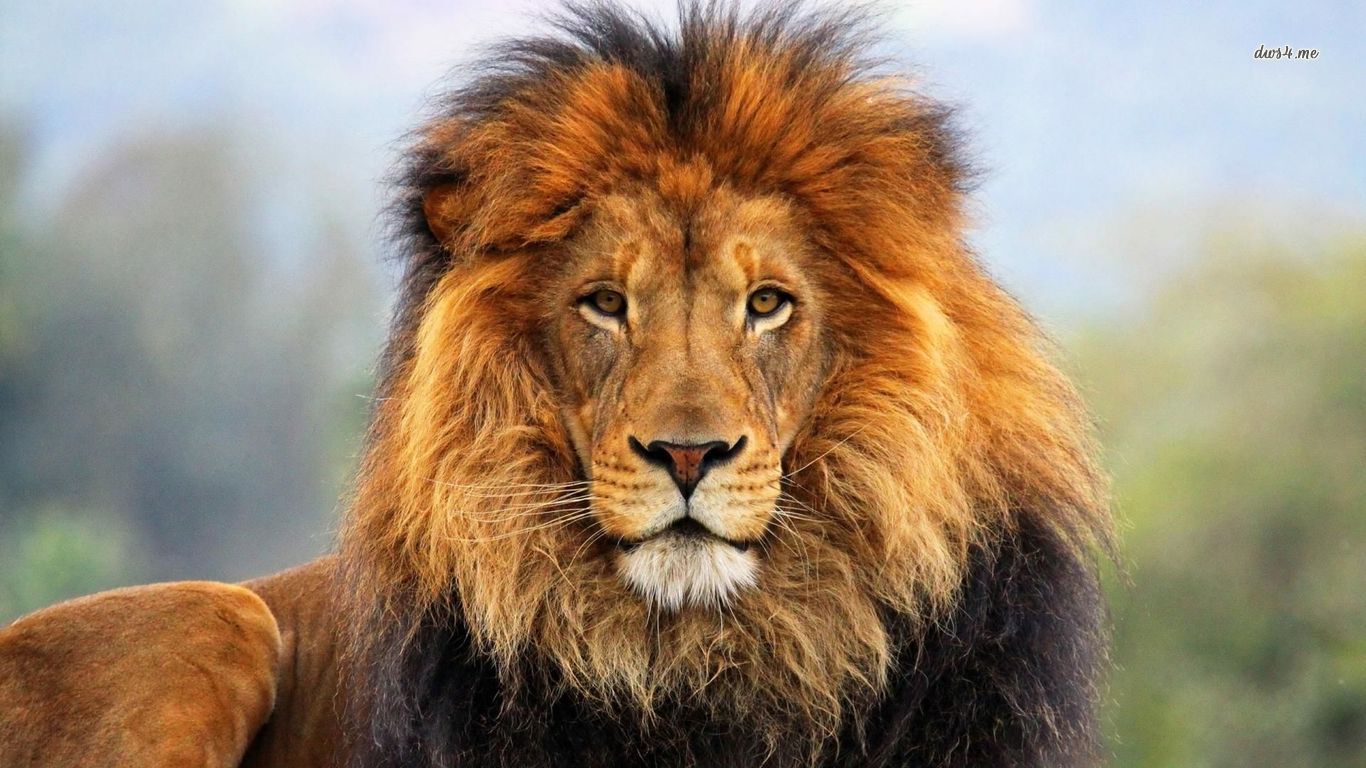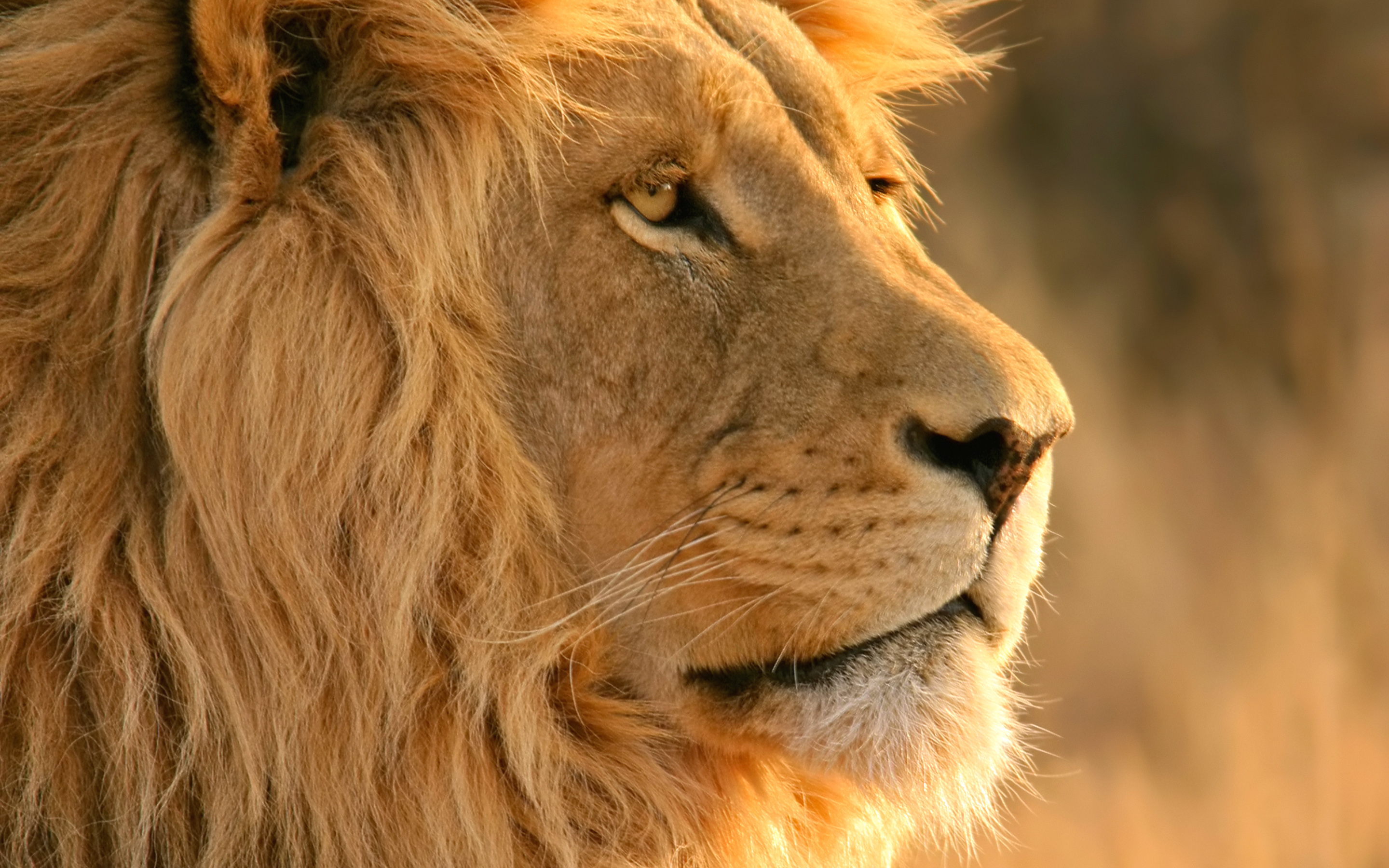
Surpassed in size only by tigers, African male lions range in weight from 330 to 420 pounds, stand about forty-eight inches tall at the shoulder, and average 8 to 9.5 feet in length, including the tail. Females are smaller, weighing from260 to 350 pounds, stand about forty inches tall, and average seven to eight feet in length. The Asian lion subspecies (Panthera leo persica) is similar in size, but somewhat shorter and stockier in build. Among cats, lions are the only species to show sexual dimorphism-mature males display a distinctive mane encircling their head and shoulders; it darkens with age, giving the lion a majestic look. Coat color is normally tawny yellow to reddish brown in both sexes, with black accents on ears, tail tips, and manes. Cubs are born spotted, but by three months of age begin showing the uniform coat color of their parents.
Lion Behavior
Unlike other wild cat species, lions live and hunt in groups, called prides. (Domestic cats exhibit some similarities in group behavior.) The pride's core consists of two to twelve closely related lionesses, who assist each other in raising their cubs. Female offspring usually remain members of the group, but males are driven off before becoming sexually mature. Two to four unrelated males live with the pride, fathering the cubs, protecting the pride, and proclaiming their territory with scent marks and loud roars that can be heard for five miles. Males rarely control a pride more than three or four years before being replaced by younger, more powerful challengers. Lions are crepuscular hunters, preferring to rest in the shade during the heat of the day; they emerge at sunset or in the early morning to pursue their prey. Lionesses do most of the killing, cooperating when stalking and ambushing victims. The preferred targets are medium to large hoofed animals such as antelopes, zebras, and wildebeests. Males rarely participate in chases unless their weight is needed to bring down large bull buffaloes; however, males claim first place at the pride's feasts. Lions are also opportunistic scavengers, stealing prey from leopards, cheetahs, and hyenas. Similar to other big cats, lions kill by biting their victims' necks, strangling them, or severing their spinal cords with sharp canine teeth. Scissoring carnassials and rasplike papillae leave little of their victims other than bones and skin.
Lions and Humans
Throughout history, lions have been called "King of Beasts" and used to symbolize royal authority. Rulers, often described as lions, wore lion skins to impress subjects with their majesty and power. Hunters demonstrated bravery and prowess by killing lions. Lions have been celebrated in myth and legend fromantiquity to the present; in astrology, Leo Major reigns as the fifth house of the Zodiac. Originally, lions existed throughout southern Europe, all of Africa, the Near East, and from southwest Asia to India. As human population and agriculture expanded, hunting and habitat destruction greatly reduced lion numbers. By 100 c.e., lions had been eliminated from Europe, by the time of the Crusades they were extinct in the Near East, and before 1900 had vanished from North Africa and most of Asia. When the Nawab of Junagadh established the Gir Forest Lion Sanctuary in Gujarat, India, in 1965, less than 100 Asian lions remained in the world; a 1990 study estimated that the population had rebounded to about 250 individuals. Estimates of the African lion population south of the Sahara Desert run as high as fifty thousand. The overwhelming majority live in national parks and reserves, where wild animals are protected as valuable national assets, attracting tourists and significant income. In the parks, lions have become so accustomed to humans that they sometimes rest in the shade of tour buses to avoid the afternoon sun. As human populations continue expanding, governments face pressure to reduce the preserves and permit agriculture and grazing to increase the food supply. However, most naturalists believe the monetary value of wild animals in producing foreign exchange will ensure the long-term survival of the African lion, even if reduced in numbers.
Classification:
Kingdom: Animalia
Subkingdom: Bilateria
Phylum: Chordata
Subphylum: Vertebrata
Class: Mammalia
Subclass: Eutheria
Order: Carnivora
Family: Felidae (cats)
Genus and species: Panthera leo
Geographical location: Once common to many
areas of Europe, Africa, and Asia; now found
only within protected areas in Africa south of
the Sahara and in one wildlife refuge in India
Habitat: Grassy plains, savannas, and open woodlands
Gestational period: 3 to 3.5 months
Life span: About twelve to fifteen years in the
wild, twenty years or more in captivity
Special anatomy: Large eyes with excellent night
vision; jaws adapted to seizing and gripping
prey; teeth designed for tearing and slicing flesh




Copyright © 2016-2017 Animalia Life | All rights reserved